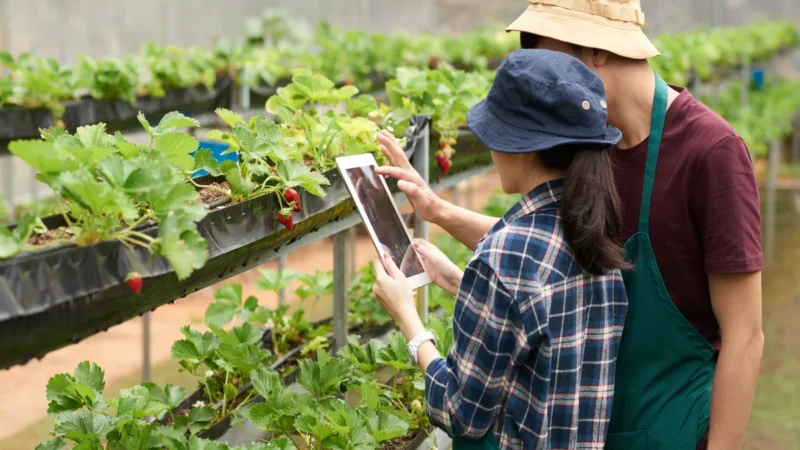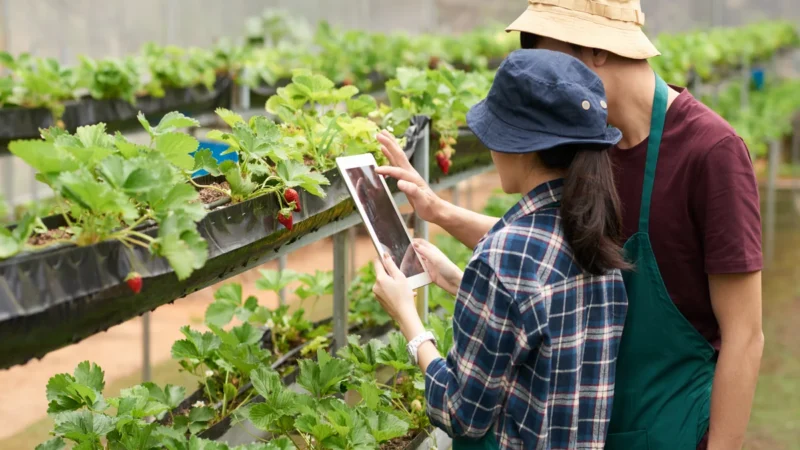Fostering Food Security: The Strength of Regenerative Agriculture Collaboration

In a world grappling with the challenges of a growing global population, environmental degradation, and the impact of climate change on agriculture, the need for sustainable and regenerative farming practices has never been more urgent. Regenerative agriculture is a holistic approach to farming that focuses on revitalizing the land, enhancing soil health, and fostering biodiversity, all while producing nutritious food. This innovative approach holds great promise for addressing food security concerns worldwide. In this article, we will explore the strength of collaboration in promoting regenerative agriculture as a potent tool in the pursuit of global food security.
The Imperative of Food Security:
Food security, as defined by the United Nations, exists “when all people, at all times, have physical, social, and economic access to sufficient, safe, and nutritious food that meets their dietary needs and food preferences for an active and healthy life.” Achieving food security is not only a moral imperative but also a fundamental pillar of global stability and peace. Regrettably, millions of people around the world still face food insecurity, with a complex interplay of factors such as poverty, environmental degradation, and unsustainable farming practices contributing to this crisis.
Regenerative Agriculture: A Paradigm Shift:
Regenerative agriculture is a paradigm shift in how we approach farming. It prioritizes the regeneration of ecosystems and soil health, with a focus on improving the natural capital of the land. Key principles of regenerative agriculture include minimizing soil disturbance, keeping the soil covered with vegetation or mulch, diversifying crop and animal systems, and integrating livestock with cropping systems. These practices not only improve the long-term sustainability of farming but also contribute to enhanced food security.
The Strength of Collaboration:
Collaboration is at the heart of the success of regenerative agriculture in fostering food security. It brings together diverse stakeholders, from farmers and scientists to policymakers and consumers, to work collectively towards sustainable food production. The following are some of the ways in which collaboration can strengthen the regenerative agriculture movement:
- Knowledge Sharing and Research: Collaboration encourages the exchange of knowledge and research findings. Scientists and farmers can work together to develop and implement regenerative practices that are tailored to local conditions, resulting in more effective and sustainable agricultural systems.
- Policy Support: Governments and regulatory bodies can play a crucial role in advancing regenerative agriculture by creating policies and incentives that encourage its adoption. Collaboration between agricultural organizations and policymakers is essential for creating a supportive regulatory environment.
- Market Access: Collaboration can help farmers access markets for regenerative products. Retailers, restaurants, and consumers who value sustainably produced food can work together to create demand for these products, providing a market for regenerative farmers.
- Education and Outreach: Collaboration between NGOs, educational institutions, and local communities can raise awareness about the benefits of regenerative agriculture. Educating farmers and consumers about these practices is essential for their widespread adoption.
- Scaling Up: Collaboration allows for the scaling up of regenerative agriculture initiatives. By pooling resources and expertise, organizations can expand the reach of regenerative practices, benefiting more communities and enhancing food security.
Key Takeaways
In the face of global challenges such as climate change and population growth, regenerative agriculture stands as a beacon of hope for achieving food security. The strength of collaboration among stakeholders is the key to realizing the full potential of this transformative approach to farming. By working together, we can ensure that regenerative agriculture becomes a cornerstone of sustainable food production, providing a path to a more secure and resilient global food system. It is imperative that we continue to foster collaboration in this endeavor, as the strength of unity will be instrumental in addressing the pressing issue of food security.
FAQs:
Regenerative agriculture is an approach to farming that focuses on enhancing soil health, improving ecosystem biodiversity, and reducing environmental degradation while producing food. It involves practices like minimal soil disturbance, crop diversity, and the integration of livestock into cropping systems.
Regenerative agriculture fosters food security by promoting sustainable and resilient farming practices. It helps improve soil health, increases crop yields, and enhances the long-term productivity of agricultural land, ultimately ensuring a consistent supply of nutritious food for growing populations.
Regenerative agriculture reduces soil erosion, enhances water retention, and sequesters carbon in the soil, which helps mitigate climate change. It also promotes biodiversity, reduces the need for synthetic fertilizers and pesticides, and improves overall ecosystem health.
Regenerative agriculture benefits a wide range of stakeholders. Farmers experience increased yields and reduced input costs. Consumers gain access to healthier and more sustainably produced food. The environment benefits from reduced pollution and improved soil and ecosystem health. Society as a whole benefits from greater food security.
Regenerative agriculture can be practiced on farms of all sizes, from small family farms to large commercial operations. The principles can be adapted to suit the specific needs and scale of the farm.


